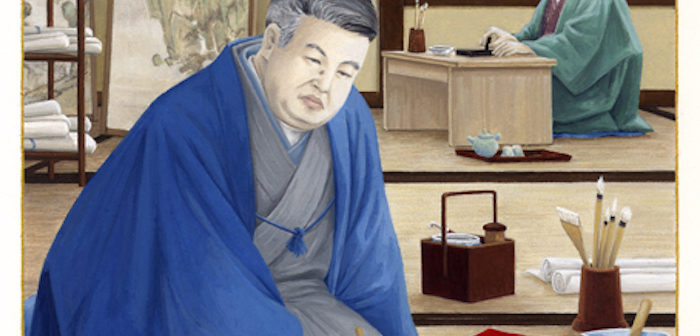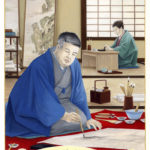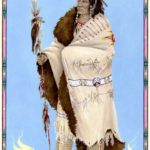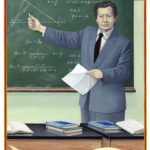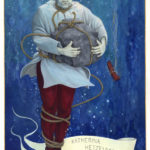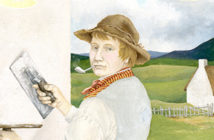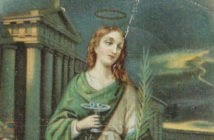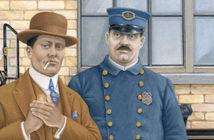Big Red & Shiny is pleased to welcome Boston-based artist Ria Brodell to our residency series, Inside/Out. Brodell's painstakingly rendered gouache paintings depict pre-twentieth-century historical figures who strayed outside their assigned gender and sought alternative ways of living. "Butch Heroes" memorializes their stories—sometimes tragic, other times surprisingly hopeful. Fueled by extensive research and modeled after the Catholic Holy Card, Brodell's paintings honor their subjects in a way they likely were not in their lifetimes. Each jewel-toned painting acts as a window to the past, shedding light on the history of gender fluidity. In their first post, Brodell introduces us to the inspiration and research behind the series.
-Scout Hutchinson
I think about my gender every day (maybe we all do?). Sometimes in long internal dialogues, other times it’s more like, “If my housemate’s soap is MAN soap, is my soap gender neutral?”
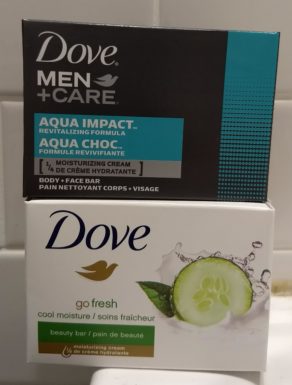
His is geometric and gray (it smells awful btw), note the packaging includes the words “technology” and “design.” Image courtesy of the artist.
When I was in 7th grade, a boy confronted me outside of my middle school. He asked me what I was and then demanded I prove it. I’m still asked that question fairly frequently, sometimes directly, sometimes I overhear it. Most of the time the question is posed with genuine sincerity (and by kids), as opposed to the hostility of the first time it was asked. I used to ignore it and walk away. Now I just answer, “neither,” and smile.
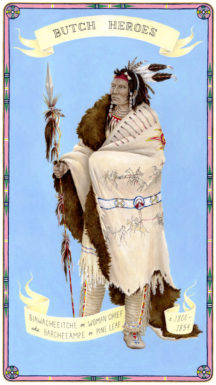
Ria Brodell, Biawacheeitche or Woman Chief aka Barcheeampe or Pine Leaf c. 1800-1854 Apsáalooke Nation, 2011, gouache on paper, 11 x 7 inches, In the collection of the Davis Museum at Wellesley College
Gender is one of the topics that my series “Butch Heroes” has helped me to understand. I didn’t necessarily start the series in an effort to become more comfortable in my own skin, but that’s what’s happened. I started it out of curiosity. I was both surprised and not surprised by what I found.
I’m looking for people in history that I can identify with, and I paint their portraits. I set criteria for myself, to keep it personal. My subjects were born before or around the turn of the twentieth century. They were assigned female at birth, they presented themselves as more masculine than feminine, and they had relationships with women. (I use their actions, their relationships, and their gender presentation to determine whether they fit in the series because I don’t know what terms they would have ascribed to themselves given today’s options in terminology.)
I was not particularly surprised that, prior to colonization, many non-western and indigenous cultures had a very open view of gender and sexuality. Some had language and roles for upwards of five different genders. While in most Christian societies I was surprised that the gender transgression (impersonating a man, violating the true nature of their sex, etc.) was often seen as a greater offense than sexuality. And I was happily surprised by the stories of those like Okuhara Seiko and Olga Nikolaevna Tsuberbiller, who achieved a considerable amount of respect and success during their lifetimes.
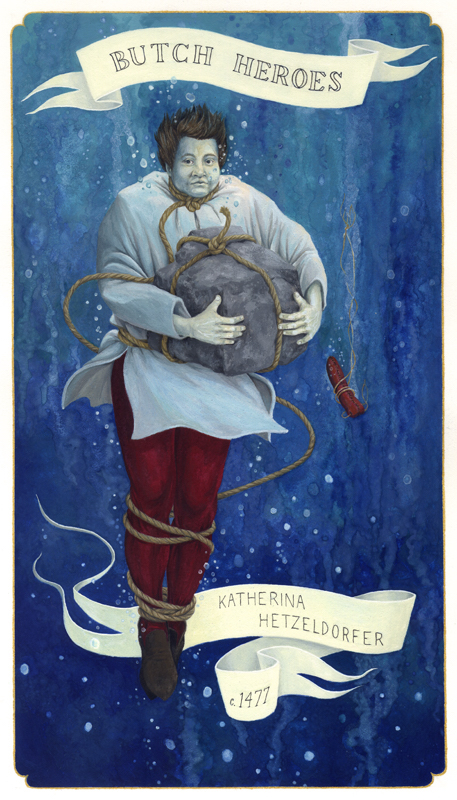
Ria Brodell, Katherina Hetzeldorfer c. 1477 Germany, 2012, gouache on paper, 11 x 7 inches, In the collection of the Davis Museum at Wellesley College
Researching gender and sexuality in other cultures throughout history, and finding people that existed generations before me that dealt with issues surrounding their gender (and sexuality) has given me more confidence to identify as someone outside of male or female. There have always been more options than the binary.
Last summer, I was walking to a friends house and a father and son were following close behind me. The son was on a scooter and his dad cautioned him, “Be careful, don’t run into her.” The son replied, “Dad, they’re not a girl.” The dad’s response, “Right, ok, please don’t run into THEM.”
- Ria Brodell, Okuhara Seiko & Watanabe Seiran 1837-1913 and 1855-1918 Japan, 2013, gouache on paper, 11 x 7 inches, In the collection of the Davis Museum at Wellesley College
- Ria Brodell, Biawacheeitche or Woman Chief aka Barcheeampe or Pine Leaf c. 1800-1854 Apsáalooke Nation, 2011, gouache on paper, 11 x 7 inches, In the collection of the Davis Museum at Wellesley College
- Ria Brodell, Olga Nikolaevna Tsuberbiller 1885-1975 Russia, 2014, gouache on paper, 11 x 7 inches
- Ria Brodell, Katherina Hetzeldorfer c. 1477 Germany, 2012, gouache on paper, 11 x 7 inches, In the collection of the Davis Museum at Wellesley College
- His is geometric and gray (it smells awful btw), note the packaging includes the words “technology” and “design.” Image courtesy of the artist.
- His is geometric and gray (it smells awful btw), note the packaging includes the words “technology” and “design.” Image courtesy of the artist.
SaveSave

